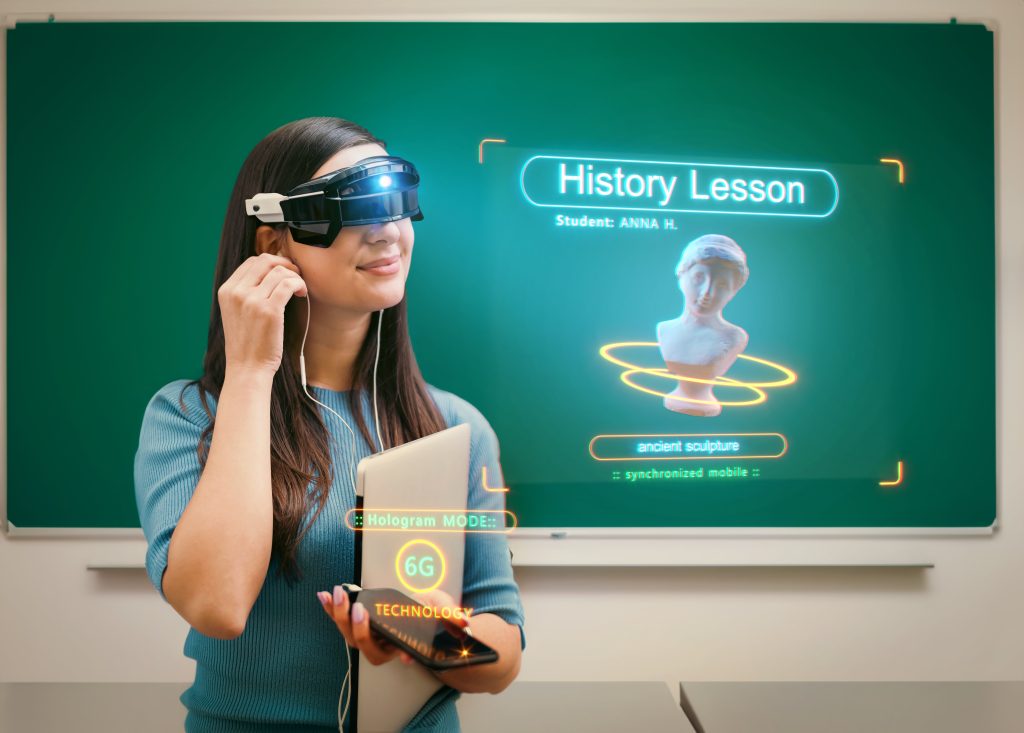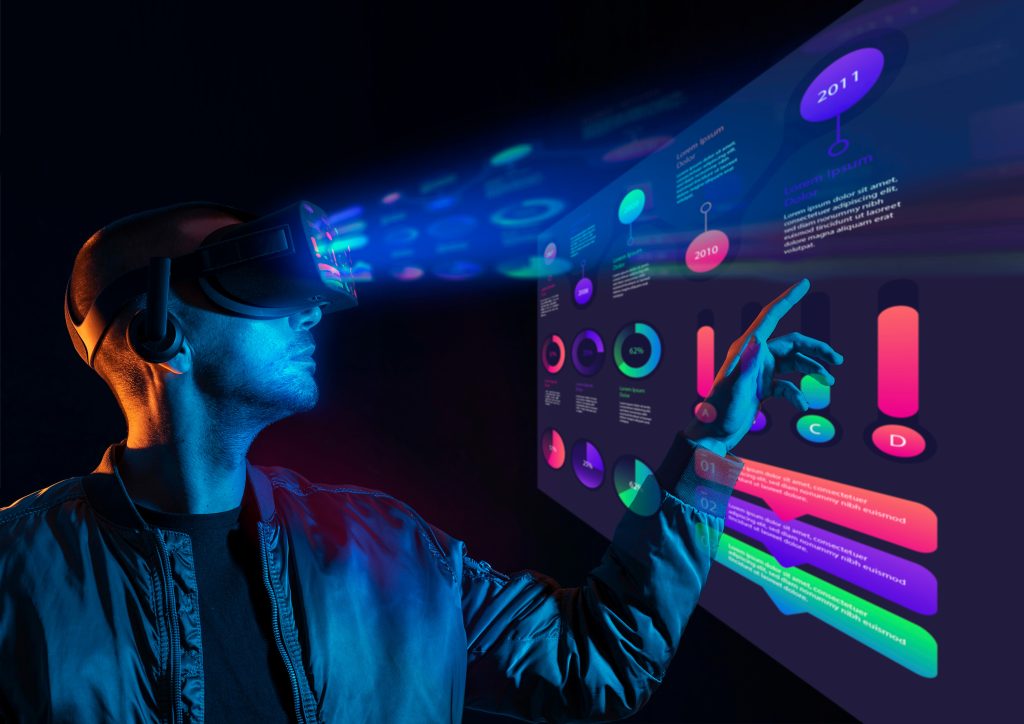The landscape of higher education has undergone a seismic shift in recent years, with virtual learning emerging as a cornerstone of modern pedagogy. As the world grapples with the challenges and opportunities presented by the digital age, top universities are leading the charge in adopting innovative virtual learning strategies. This article explores the transformative approaches these institutions are taking to enhance the educational experience and prepare students for a digitized future.
Embracing Technology in the Classroom
The integration of technology into the classroom has been pivotal in the evolution of virtual learning. Universities are leveraging cutting-edge tools such as Learning Management Systems (LMS), virtual reality (VR), and artificial intelligence (AI) to create immersive and interactive learning environments. These technologies enable students to engage with course material in new and exciting ways, breaking free from the constraints of traditional classroom settings.
Learning Management Systems (LMS)
LMS platforms like Canvas, Moodle, and Blackboard have become the backbone of virtual learning, providing a centralized hub for course content, assignments, and communication. These systems offer unparalleled flexibility, allowing students to access learning materials at any time and from any location. The ability to track progress and receive immediate feedback has significantly enhanced the learning process, fostering a more personalized educational experience.

Virtual Reality (VR) and Augmented Reality (AR)
VR and AR technologies are revolutionizing the way students interact with complex concepts and simulations. By creating virtual labs and immersive simulations, universities are providing students with hands-on experience in a risk-free environment. These technologies have proven particularly beneficial in fields such as medicine, engineering, and architecture, where practical application is key to understanding.
Artificial Intelligence (AI)
AI is transforming the educational landscape by offering personalized learning experiences and automating administrative tasks. AI-driven tutoring systems can adapt to individual learning styles, providing customized support and resources to optimize student performance. Additionally, AI-powered analytics are helping educators identify patterns and predict student outcomes, enabling them to intervene proactively to support student success.
Expanding Access and Flexibility
One of the most significant advantages of virtual learning is the increased access it provides. Top universities are utilizing online platforms to reach a global audience, offering courses and degrees to students who may not have the means or ability to attend on-campus classes. This democratization of education is breaking down geographical and socioeconomic barriers, making high-quality education more inclusive and accessible.
Online Degree Programs
Institutions such as Harvard, MIT, and Stanford have expanded their offerings to include fully online degree programs. These programs maintain the same rigorous standards as their on-campus counterparts, ensuring that students receive a world-class education regardless of their location. The flexibility of online learning also caters to working professionals and non-traditional students, accommodating diverse lifestyles and commitments.
Massive Open Online Courses (MOOCs)
MOOCs have emerged as a popular means of delivering educational content to a vast audience. Platforms like Coursera, edX, and Udacity collaborate with universities to provide free or low-cost courses on a wide range of subjects. MOOCs not only offer flexibility and accessibility but also foster a community of lifelong learners committed to personal and professional development.
Fostering Collaboration and Community
Despite the physical separation, virtual learning environments are designed to promote collaboration and build a sense of community among students. Through discussion forums, group projects, and live video conferencing, students can connect with peers and instructors, replicating the social aspects of on-campus learning.
Interactive Discussion Forums
Discussion forums are a staple of virtual learning, encouraging students to engage in meaningful conversations and debates. These platforms facilitate the exchange of ideas and perspectives, enriching the learning experience and fostering a collaborative spirit.
Live Video Conferencing
Live video conferencing tools like Zoom and Microsoft Teams have become essential for real-time interaction. They enable synchronous classes, office hours, and group meetings, providing a space for direct communication and relationship building.
Preparing for the Future
As the digital shift continues to reshape the educational landscape, universities are not only adapting but also preparing students for the demands of a digital world. The skills acquired through virtual learning—such as digital literacy, remote collaboration, and self-directed learning—are increasingly valuable in today’s workforce.
By embracing innovation in virtual learning, top universities are setting a precedent for the future of education. They are crafting an experience that is not only academically enriching but also reflective of the evolving digital era. As we look ahead, the potential for growth and advancement in virtual learning is boundless, promising a brighter, more inclusive future for learners around the globe.
Certainly! Let’s delve deeper into the digital transformation of higher education by expanding on the topics of online assessments and the continuous adoption of digital learning methods.

Revolutionizing Assessments: Online Exams and Entry Tests
The shift to virtual learning has necessitated a rethinking of assessment methods. Universities have embraced online exams and entry tests as a viable alternative to traditional in-person evaluations. This transition has not been without challenges, but the potential benefits are significant.
Online Examinations
Online exams offer a level of convenience and flexibility that is unattainable with traditional exams. Students can take assessments from anywhere, reducing the stress and logistical issues associated with on-site exams. To ensure integrity, universities are employing advanced proctoring solutions that monitor students through webcams and screen-sharing technologies. These systems can detect suspicious behavior and maintain the credibility of the examination process.
Virtual Entry Tests
Entry tests for university admissions have also moved online, allowing institutions to reach a broader pool of applicants. Virtual entry tests are designed to be accessible and secure, utilizing remote proctoring and identity verification to uphold standards. This approach has opened doors for students from diverse backgrounds, making higher education more accessible than ever before.
Digital Interviews and Competitions: Expanding Opportunities
The digital shift has also transformed how universities conduct interviews and competitions. Virtual platforms enable institutions to engage with candidates and participants across the globe, fostering a more inclusive environment.
Remote Interviews
For admissions, scholarships, and faculty positions, universities are conducting interviews remotely. This not only saves time and resources but also allows for a more diverse selection of candidates. Digital interviews can be recorded and reviewed by multiple committee members, ensuring a thorough and fair evaluation process.
Online Competitions
Competitions, such as hackathons, case studies, and research presentations, have found a new home online. These events encourage innovation and collaboration, connecting students from different universities and disciplines. Digital competitions also offer real-world experience in remote teamwork and digital communication, skills that are invaluable in today’s job market.
Continuous Adoption of Digital Learning Methods
Top universities are not resting on their laurels; they are continuously exploring new ways to enhance virtual learning. The commitment to innovation is evident in the ongoing development of digital tools and methodologies.
Adaptive Learning Platforms
Adaptive learning platforms are the next frontier in personalized education. These systems use algorithms to adjust the difficulty and style of content based on student performance. This dynamic approach ensures that each student is challenged appropriately, leading to better learning outcomes.
Collaborative Online International Learning (COIL)
COIL programs represent a leap forward in global education. These initiatives connect classrooms from around the world, allowing students to work on joint projects and engage in cross-cultural exchanges. COIL enhances the virtual learning experience by providing a global perspective and fostering international collaboration.
Lifelong Learning Initiatives
Universities are also focusing on lifelong learning, offering courses and certificates that cater to the ongoing educational needs of alumni and the community. These initiatives support career development and personal enrichment, emphasizing the importance of continuous learning in a rapidly changing world.
Conclusion
The digital shift in education is not a temporary response to global challenges but a permanent transformation of the educational landscape. Top universities are at the forefront of this change, pioneering innovative approaches to virtual learning, assessments, and global engagement. By embracing these digital methods, they are not only enhancing the quality of education but also expanding its reach, making it more inclusive and accessible to learners worldwide.
As we continue to navigate the digital era, the role of virtual learning will only grow in significance. The innovations spearheaded by leading universities today will shape the future of education for generations to come.
